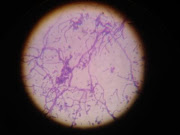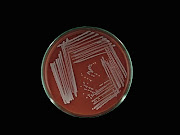Antibiogram Profile of Respiratory Pathogens and Identifying
Predisposing Factors of Respiratory Tract Infections among Patients Visiting
Bhaktapur Hospital
Shreemila
Bajracharya1†, Jharana Thapa1†, Pushpa Thapa Magar1†, Ananda Kumar Mandal2,
Niraj Manandhar2, Avinash Chaudhary1, Dinesh Dhakal1, Upendra Thapa Shrestha3*
1Department of
Microbiology, Sainik Awasiya Mahavidhyalaya, Bhaktpur, Nepal
2Bhaktapur Hospital,
Bhaktapur, Nepal
3Central
Department of Microbiology, Tribhuvan University, Kathmandu, Nepal
†These
authors contributed equally.
*Corresponding
author: Upendra Thapa Shrestha, Central Department of Microbiology,
Tribhuvan University, Kathmandu, Nepal, E-mail: upendrats@gmail.com
ABSTRACT
Objectives: To address the current problem of MDR infections and respiratory
bacterial pathogens and identify the risk factors associated with respiratory
tract infections (RTIs).
Methods: A total of 327 RTI specimens were cultured using a conventional
microbiological method to identify potential bacterial pathogens. The isolates
were then subjected to antibiotic susceptibility testing using modified Kirby
Bauer’s disc diffusion method. In addition, the risk factors associated with
RTIs were obtained by direct interviews with patients using a structured
questionnaire.
Results: The overall prevalence of RTIs among the study population was
found to be 11.9%. The highest rate of infections was observed among patients
of age group 61-70 years in both sexes and from ICU wards. Among the bacterial
pathogens, Acinetobacter baumannii was isolated in the highest number
followed by Pseudomonas aeruginosa. 64.2% A. baumannii isolates
were resistant to Azithromycin but 100% sensitive to meropenem. P.
aeruginosa resistance rate was 50% to Piperacillin-tazobactam,
ciprofloxacin, Polymyxin B and Ceftriaxone, and had the highest MDR. Half of
the Staphylococcus aureus isolates were MRSA. Risk factors such as
previous infections, family history with RTIs, chronic use of antibiotics, and
smoking were found to be significantly associated with RTIs.
Conclusion: We observed high MDR among the respiratory pathogens with growing
resistance to β-lactam, macrolides, and Polymyxins whch necessitates
alternative drugs in management. There is also need for targeted preventive
strategies, prohibition of irrational use of antibiotics, and avoidance of
exposure to risk factors such as smoking, outdoor air pollution, and chronic
use of antibiotics.
Keywords: Respiratory
tract infections, MDR, risk factors, Nepal
Citation: Bajracharya S, Thapa J, Thapa Magar P, Mandal AK, Manandhar N, Chaudhary A, Dhakal D, Thapa Shrestha U. Antibiogram profile of respiratory pathogens and identifying the predisposing factors of respiratory tract infections among the patients visiting Bhaktapur Hospital. TUJM, 2024; 11(1): 119-129.
FullText: Download























2 comments:
SELLING FRESH SSN-NIN-SIN CVVS FULLZ DUMPS DATABASE
100% Working Top Quality
Always Check & Updated New & Fresh
Good Offers for Bulk Buyers
I'll Replace or Change Info If Found Invalid
Payment Via Crypto
USA – UK – CANADA – AUSTRALIA LEADS
GET BY (DOB| CITY| STATE| ZIP| GENDER)
DL PICS FRONT BACK WITH HOLDING SELFIE
FULL-Z WITH DL NUM
FULLZ FOR TAX RETURN & UI
W-2 FORMS
DEAD FULLZ IN BULK
HIGH CS PROS
FULLZ WITH EIN
FRESH MAILS WITH PASS
DUMPS TRACK PIN 101/102
EMPLOYEE LEADS
SWEEPSTAKES
CRYPTO LEADS
CASINO LEADS
PAYDAY LEADS
LOAN LEADS
MEDICAL & HEALTH PROFESSIONAL LEADS
MORTGAGE LEADS
EIN LOOK-UP
HOMEOWNER LEADS
BUSINESS & B2B LEADS
H@CKING & SP@MMING PACKAGE WITH COMPLETE TOOLS & TUTORIAL
For Order Contact :
TG : @fullzpros
TG CHANNEL : @Bigdatatrader
WA : (+1605)-846-1870....
Mail : silasclark99 (@) gmail.com
VK ID : @fullzpros
I was diagnosed with Hepatitis B four years ago. After two years on antivirals and regular monitoring, I still struggled with symptoms, low energy, and worry about my health. Last year I tried a herbal program from NaturePath Herbal Clinic. I was skeptical, but within a few months I personally felt less fatigue, better digestion, and more balanced overall. It was a meaningful experience for me. If you or someone you know is dealing with Hepatitis B, you may explore complementary options that feel right for you this is only my personal experience.
Website: www.naturepathherbalclinic.com
Email: info@naturepathherbalclinic.com
Post a Comment